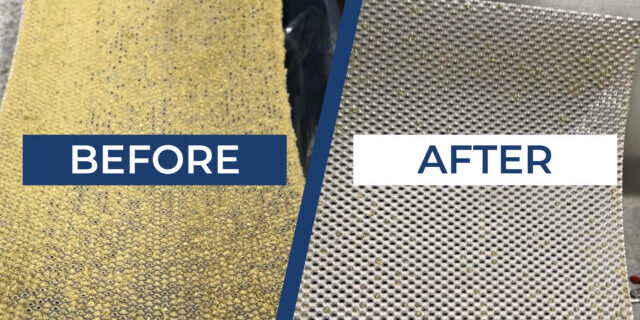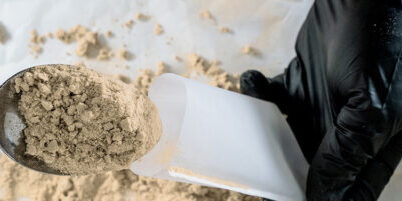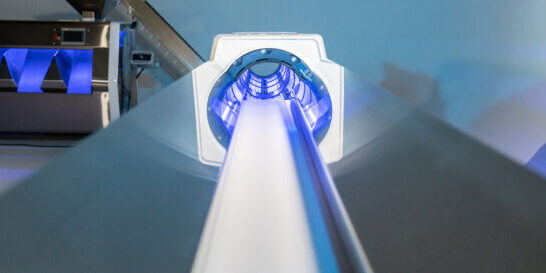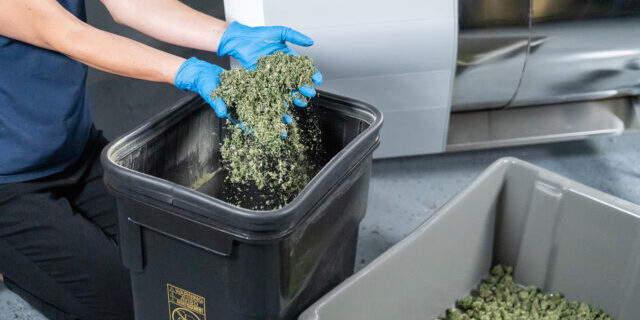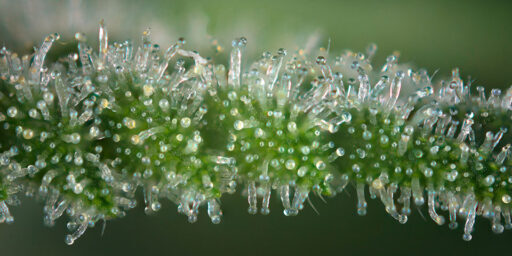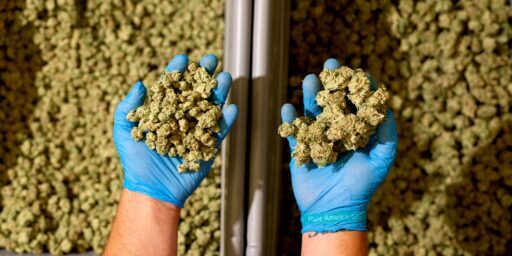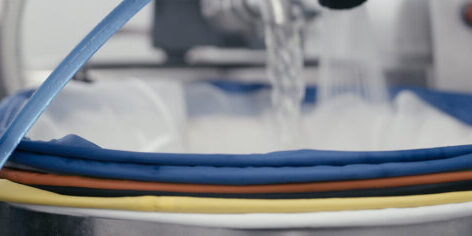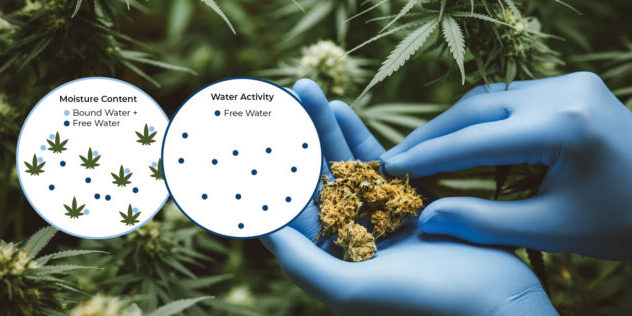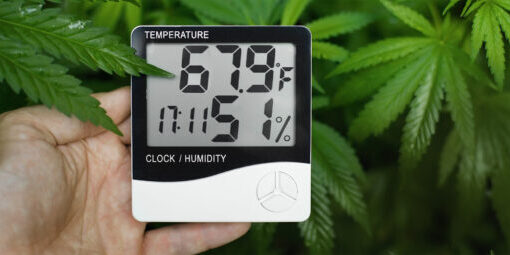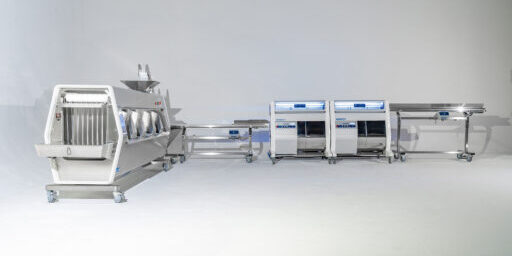Cleaning vs. Sanitizing: What’s The Difference?
For cultivators in the cannabis industry, effective cleaning and sanitizing are crucial to preserving the quality of their products, adhering to regulatory guidelines like GMP, properly maintaining equipment, and minimizing waste. Keeping equipment, grow rooms, and processing spaces clean is the best preventative maintenance action a business in this industry can take to keep operations in peak condition.
This article will cover the main differences between cleaning, sanitizing, and sterilizing your equipment and operation spaces, which will help you protect your products and reputation, and keep you in compliance.
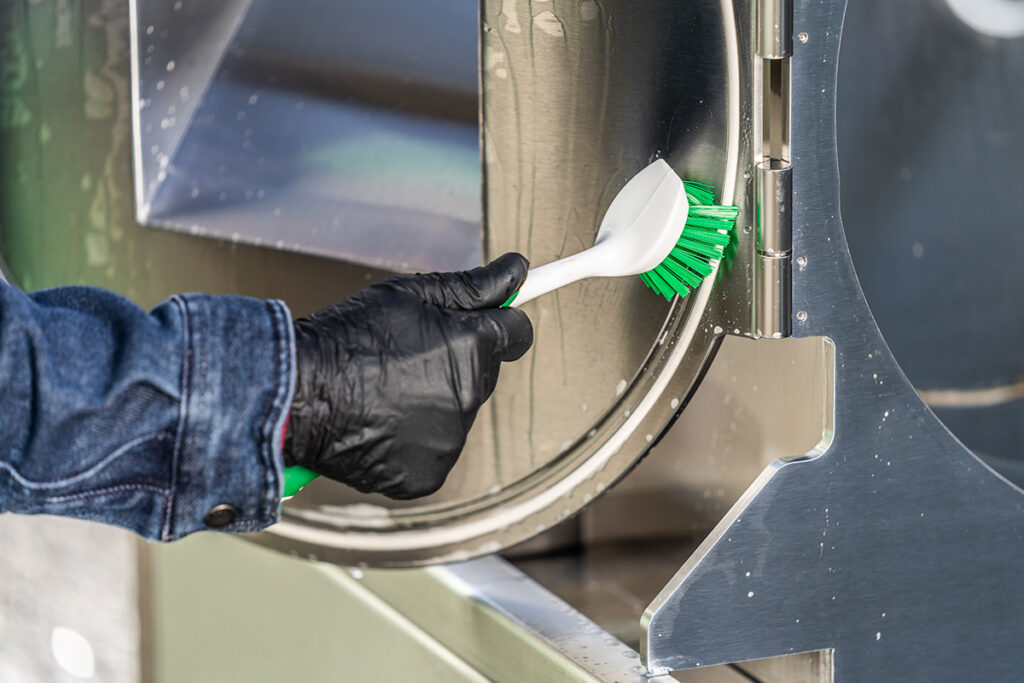
Cleaning vs Sanitizing: The Difference
Many people use the terms “cleaning” and “sanitizing” interchangeably. However, it’s necessary to understand the key differences between the two processes in a space like the cannabis industry. Failure to do so could mean you harm the quality of your products, and risk non-compliance with industry standards, like GMP.
What is Cleaning?
Cleaning is about removing the visible dirt, grime, and debris you can see.
On an automated cannabis trimming machine, it would mean removing the mess—leftover plant matter, leaves, and any cannabis resin—that has built up on the unit throughout a trim session. A clean machine may look ready for a new batch, but “cleaning” only means there’s no visible plant matter or resin left behind.
The reality is that unseen germs and components could still remain on the surface of your machinery, waiting to contaminate your product.
Proper cleaning is typically the first step in truly maintaining your equipment and spaces. It’s the stage where you remove any organics, dirt, greases, oils, or resin from your equipment, and eliminate some forms of harmful bacteria. Cleaning a dirty surface before sanitizing is necessary, because impurities like resin may make it harder for chemicals to reach hidden germs.
What is Sanitizing?
Sanitizing is a process that reduces the number of bacteria to a safe level, similar yet distinct from disinfecting. While disinfecting aims to kill a wider spectrum of microorganisms, sanitizing focuses on reducing bacteria specifically. Both processes go beyond the basics of your standard cleaning product. Sanitizing processes can use various substances, but in the cannabis industry, most cultivators rely on chemical disinfectants, such as isopropyl alcohol.
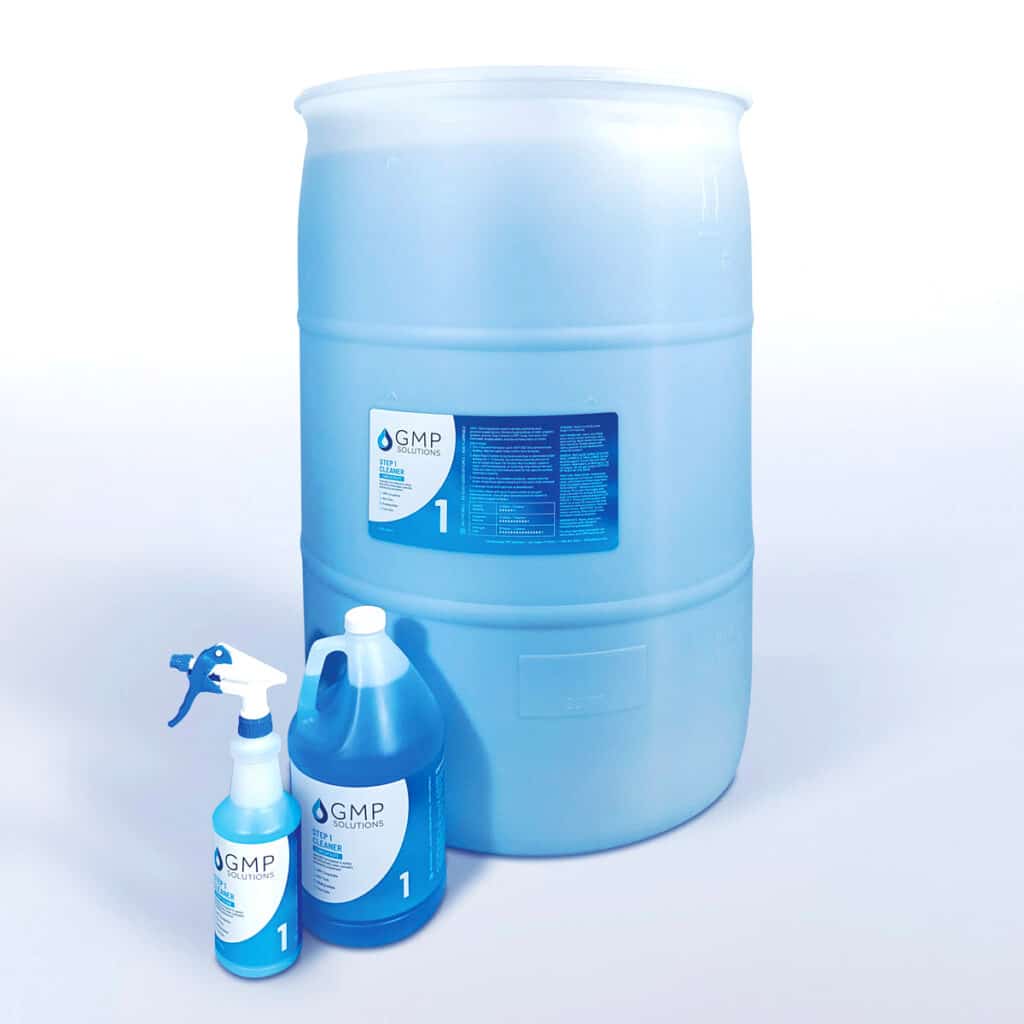
To understand the difference between cleaning and sanitizing, imagine a dirty stovetop. Using a disinfectant wipe on the stovetop for 20 seconds targets a broad range of microbes, effectively disinfecting the surface. This will likely kill most of the bacteria and viruses sitting right on top, but the layer beneath will remain.
However, if you first scrub the stovetop with a cleaner or degreaser, you’ll remove all surface-level soils. Then, wiping it down with a sanitizer will eliminate any remaining germs. This is the process we recommend for cleaning your Mobius equipment.
Start by using a food-safe cleaner to remove all the resin and plant matter. Spray, rinse, or wipe with water to remove the solution. Then, you’ll do a sanitizing and disinfecting step that will target germs such as bacteria and viruses. A quick ATP test to confirm you’ve done the job successfully, and you can get your equipment back into operation.
What is Sterilization?
Sterilization is another process in the commercial cleaning world, that often follows cleaning, sanitizing, and disinfecting your equipment.
While disinfecting removes most germs and viruses, sterilization removes all microorganisms from a surface or machine, including those that aren’t necessarily harmful. To sterilize, companies use things like pressurized steam, hydrogen peroxide gas, and infrared radiation.
Sterilization may not be necessary every time you use your equipment, but it can help elevate the cleanliness of some of your machines and hard surfaces to a higher standard.
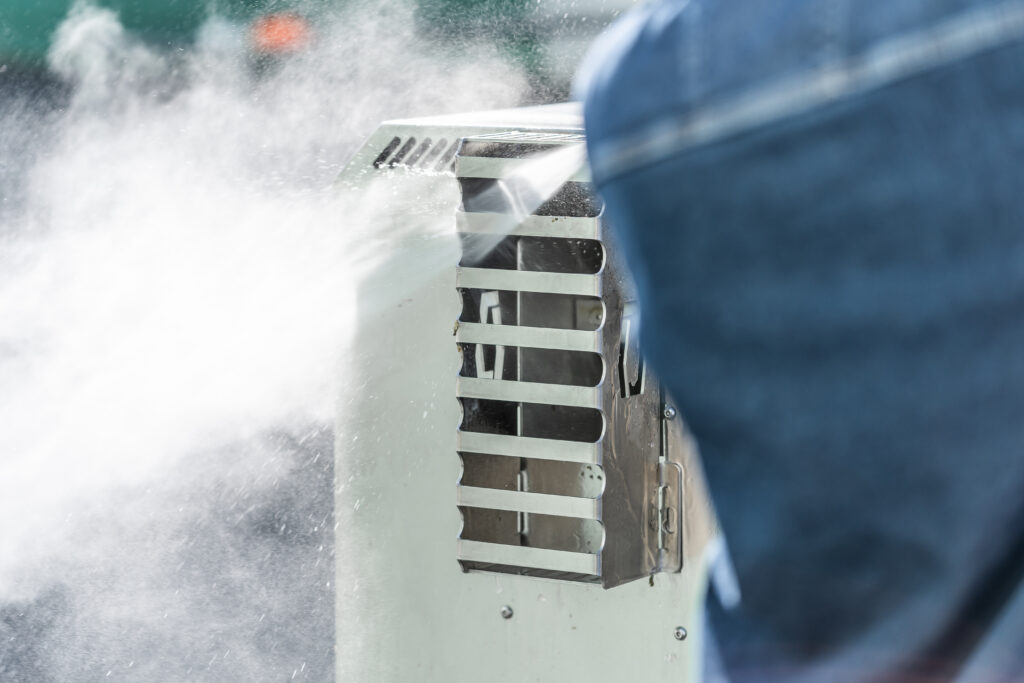
Talk to a GMP expert about your cleaning protocol today.
Cleaning and Sanitizing in Cannabis Processing: The Grow Room
Thoroughly cleaning and sanitizing within a cannabis business requires careful consideration of all the aspects of your operational environment. This may start with your cannabis grow room. Cleaning, sanitizing, and disinfecting your cannabis grow room is important for preserving plant health, and reducing the risk of pests, diseases, and microbial contamination. This helps to promote optimal growing conditions for robust yields.
A good cleaning and disinfecting strategy also helps to preserve the consistency of your products, ensuring contaminants don’t impact the chemical composition and potency of your plants. Plus, it helps to boost your chances of adhering to regulatory standards, like GMP.
To properly maintain your grow rooms:
- Establish a regular schedule: Choose a regular cleaning schedule to help prevent the buildup of contaminants. Consider factors like harvest cycles, downtime between crops, and plant growth stages when planning your routine.
- Leverage the right cleaning strategy: There are numerous ways to clean a grow room. You can clean high-touch areas, hard surfaces, and equipment while they are in use, but you must be cautious about the cleaning product and disinfectant you choose. However, you may need to remove certain products from the grow room for in-depth cleaning sessions.
- Select the right solutions: Choose appropriate disinfectants and cleaning solutions with efficacy against common pathogens in cannabis cultivation. Avoid using chemicals that could contaminate or harm your plants.
Remember to keep detailed records of your grow room cleaning activities, and provide training to team members where possible, showing them which schedules, cleaning strategies, and equipment to use to ensure adherence to continuous standards.
Cleaning Cannabis Processing Equipment
Cleaning your equipment is likely to be the most time-consuming part of maintaining your cannabis facility. According to GMP standards, equipment should be cleaned after each use. The longer debris and resin remain on equipment, the harder it is to use.
Cleaning and sanitizing equipment regularly is crucial to:
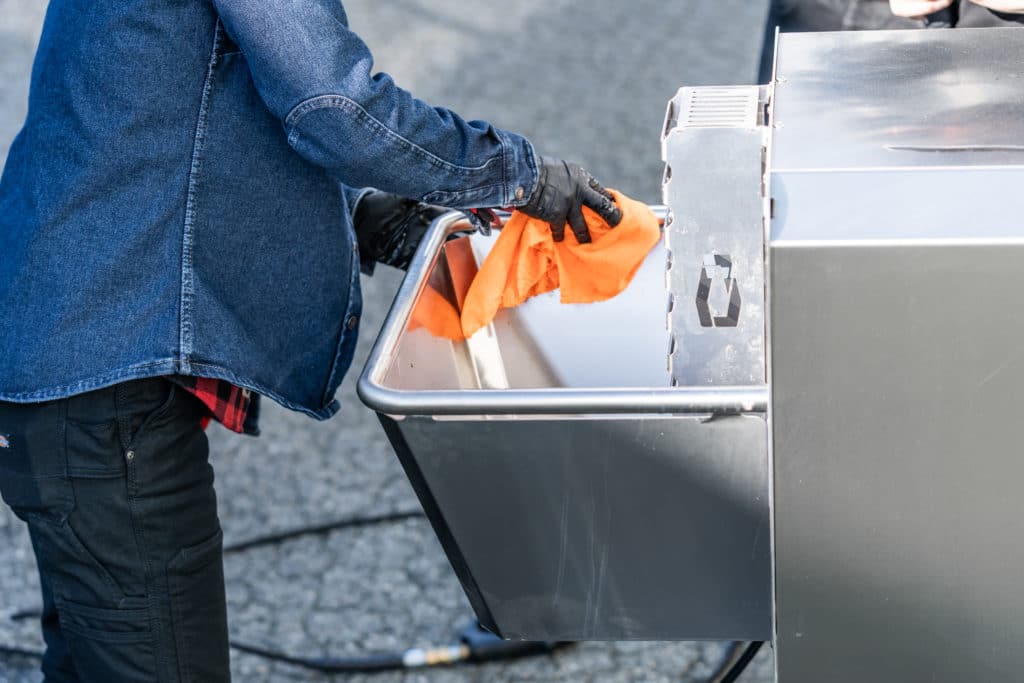
- Prevent contamination: Cleaning and sanitizing ensures there are no residual particles on the surface that could contaminate the finished products. This is crucial in an industry where product purity directly impacts quality, customer safety, and satisfaction.
- Maintaining a productive environment: Clean equipment and a clean environment contribute to a more productive landscape for your cannabis business. It helps to ensure team members can work safely, without risking the quality of your products or encountering other safety issues, like the spread of bacteria and germs.
- Compliance: In a world of increasing cannabis legalization, compliance standards like Good Manufacturing Practices are becoming crucial. Thorough cleaning and sanitation are integral components of adhering to GMP standards. This ensures your cannabis processing facilities adhere to regulatory requirements for safety, quality, and consistency, improving your brand reputation, and reducing the risk of fines.
Tips for Cleaning Cannabis Processing Equipment
Following the right strategy for cannabis equipment cleaning and sanitation can be complex, particularly when you’re trying to adhere to strict guidelines. One study found 52.4% of growers say that compliance is the top challenge they face in the industry.
Here are some essential tips for success:
- Determine which equipment to clean: Take an inventory of all of your equipment for manual and automated cannabis processing. Determine which items need to be cleaned and sanitized, and which may benefit from additional sterilization.
- Establish a cleaning routine: You should clean your equipment after every use to adhere to GMP standards. When it comes to sanitization, you’ll need to consider factors like production volume, processing frequency, and the nature of the products being handled by your equipment.
- Develop standard operating procedures: Create detailed SOPs for your cleaning and sanitization practices, based on the guidelines of GMP. Ensure you have a structured framework for staff members to follow, which outlines how often to clean and disinfect, which cleaner or disinfection tool to use, and how to use each sanitizer.
- Use the right cleaners: Ensure you select cleaners and sanitizers specially formulated for cannabis processing equipment. Consider the nature of the equipment, the type of contaminants, and the requirements for residue-free cleaning.
- Disassemble equipment where possible: The best cannabis processing and extraction equipment should be easy to disassemble. This will ensure you can clean and sanitize the equipment more thoroughly, paying attention to intricate parts, joints, and hard-to-reach surfaces that may be overlooked during routine cleaning sessions.
- Inspect and validate: Integrate a comprehensive equipment inspection strategy into the cleaning process. Conduct ATP tests to confirm you have eliminated bacteria to a safe level and achieved the right results. Make sure you keep records of your cleaning processes, in case you’re required to provide them during audits.
- Staff training: Invest in training your personnel on effective cleaning and sanitization protocols. Emphasize the importance of consistent execution, attention to detail, and adherence to safety measures throughout the cleaning process.
Maintaining a Clean and Sanitized Workplace
Understanding the difference between cleaning, sanitization, disinfecting, and even sterilization in the cannabis processing landscape is crucial. It’s not only essential to protecting the quality of your products and your brand’s reputation but also for adhering to industry guidelines like GMP.
Even in a world where automation is becoming more common among cannabis cultivators, cleaning and sterilizing is something you need to manually manage on a daily basis.
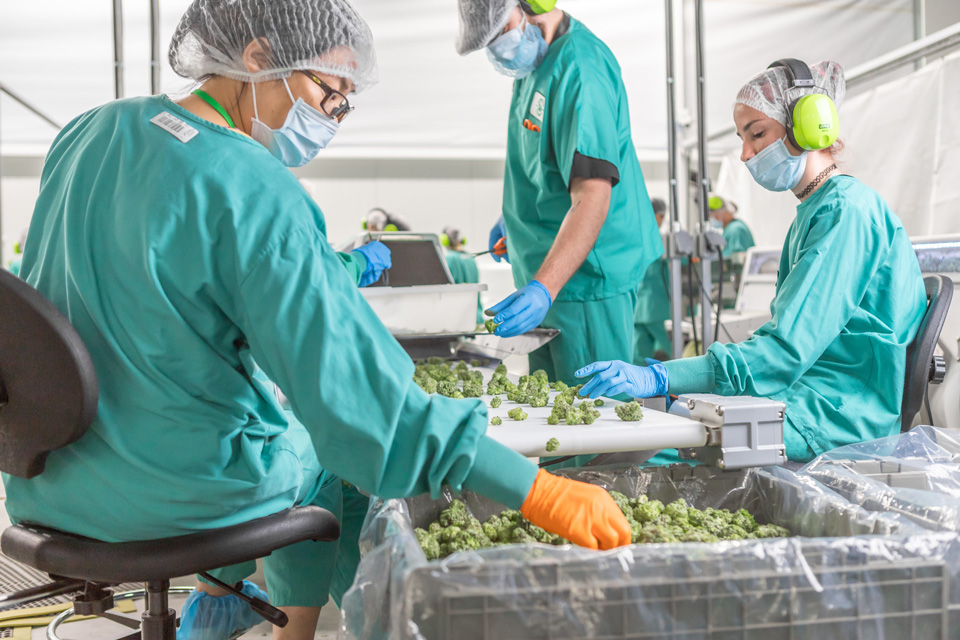
Ensure you make staying compliant easy for your team by choosing the right equipment, that’s easy to disassemble and made with food-grade stainless steel, and implementing a comprehensive strategy for maintenance.
If you’d like a deeper dive, we’ve written an extensive analysis and interpretation of the GMP regulations for the cannabis industry.
For more specific details on our recommended process, including suggestions of specific cleaners, visit our instructions and resources for more information about caring for your Mobius equipment. If you have any questions about cleaning your Mobius products, reach out to our team today.
